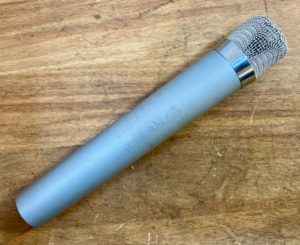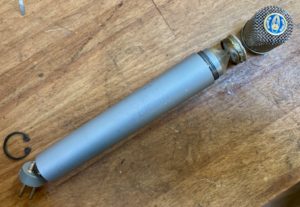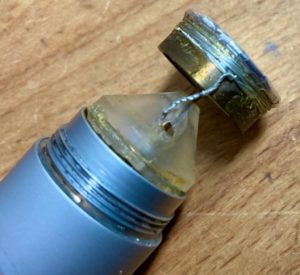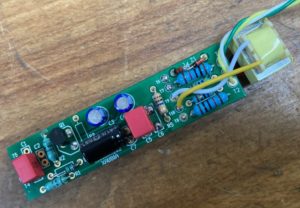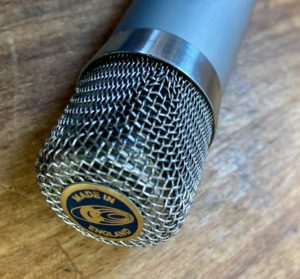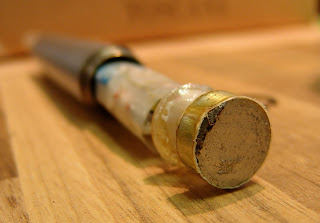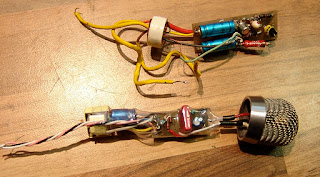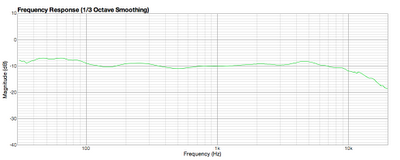A while back I wrote about the Syncron AU7a FET condenser microphones, which are sometimes badged as the Fairchild F22.
In that post I had sketched out the schematic. I have since converted one for a customer to run on phantom power, and spotted a glaring error in the schematic. Here is the revised version…
The transistor is of course a P-channel JFET, and the battery polarity is reversed, giving a positive ground. The batteries are switched off when the plug is disconnected, and the routing through the plug makes tracing a little tricky – that was my excuse anyway.
All of this means that some small modifications are needed for phantom power use, because negative ground is by far easier to implement. Using an N-channel JFET makes things much more straightforward – something like this…
The ‘adjust’ resistor is tweaked for best response to a sine wave applied across the head amplifier, and in this case the result was around 1kΩ. JFETs can vary quite a lot, and it is sensible to adjust this individually for each mic.
I built a small breakout board to supply the required voltages from the phantom power. The board fits neatly in the battery compartment.
The “110K” is again adjusted on the bench to ensure that the voltage is correct under load.
There is one more thing to note – now we have switched to negative-ground and an n-channel device, the output cap needs to be flipped round.
Here’s a measured frequency response plot for the modified mic (the dips at around 150 Hz and 600 Hz are likely to be room modes)…
The microphone works perfectly, and it is nice to hear one brought back to life after all these years!
